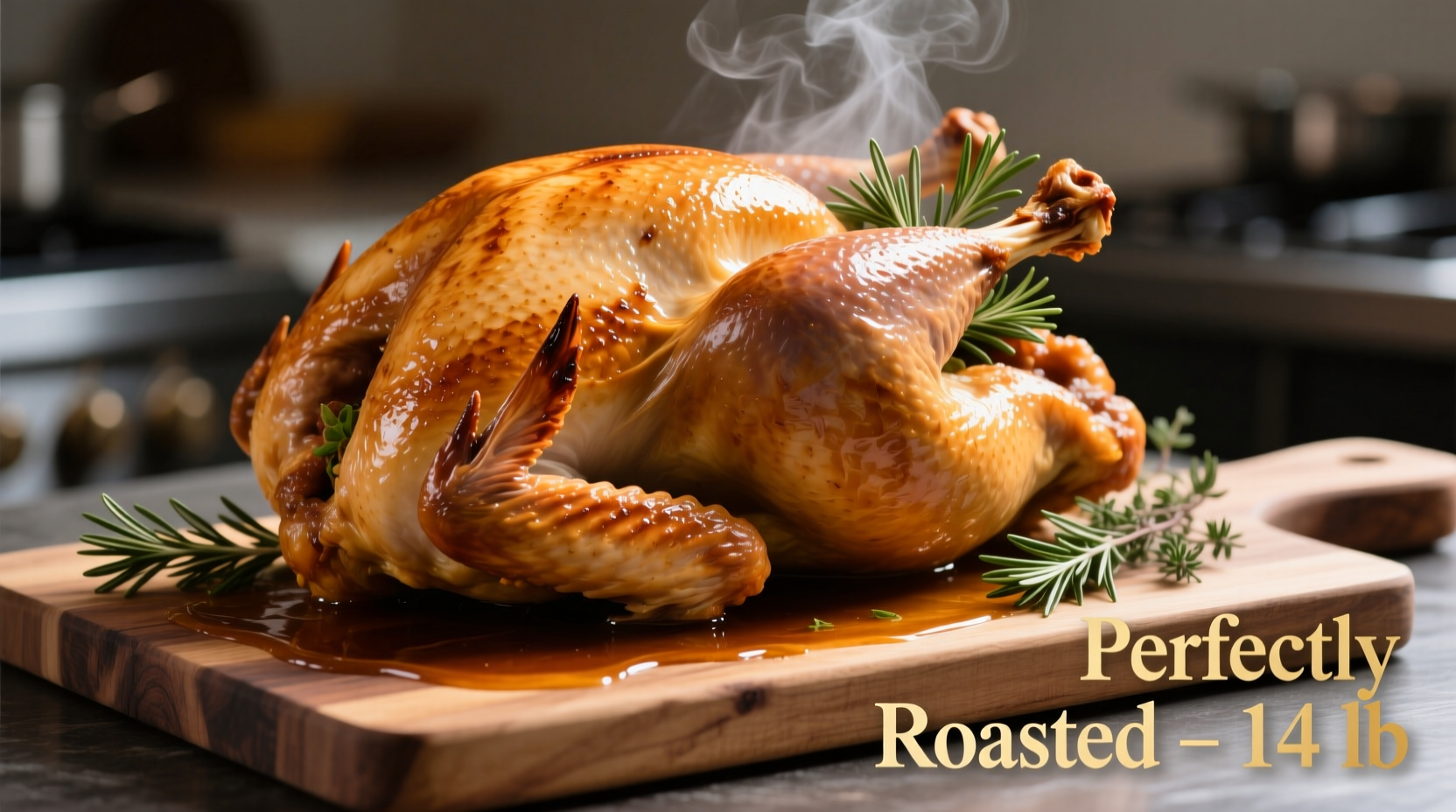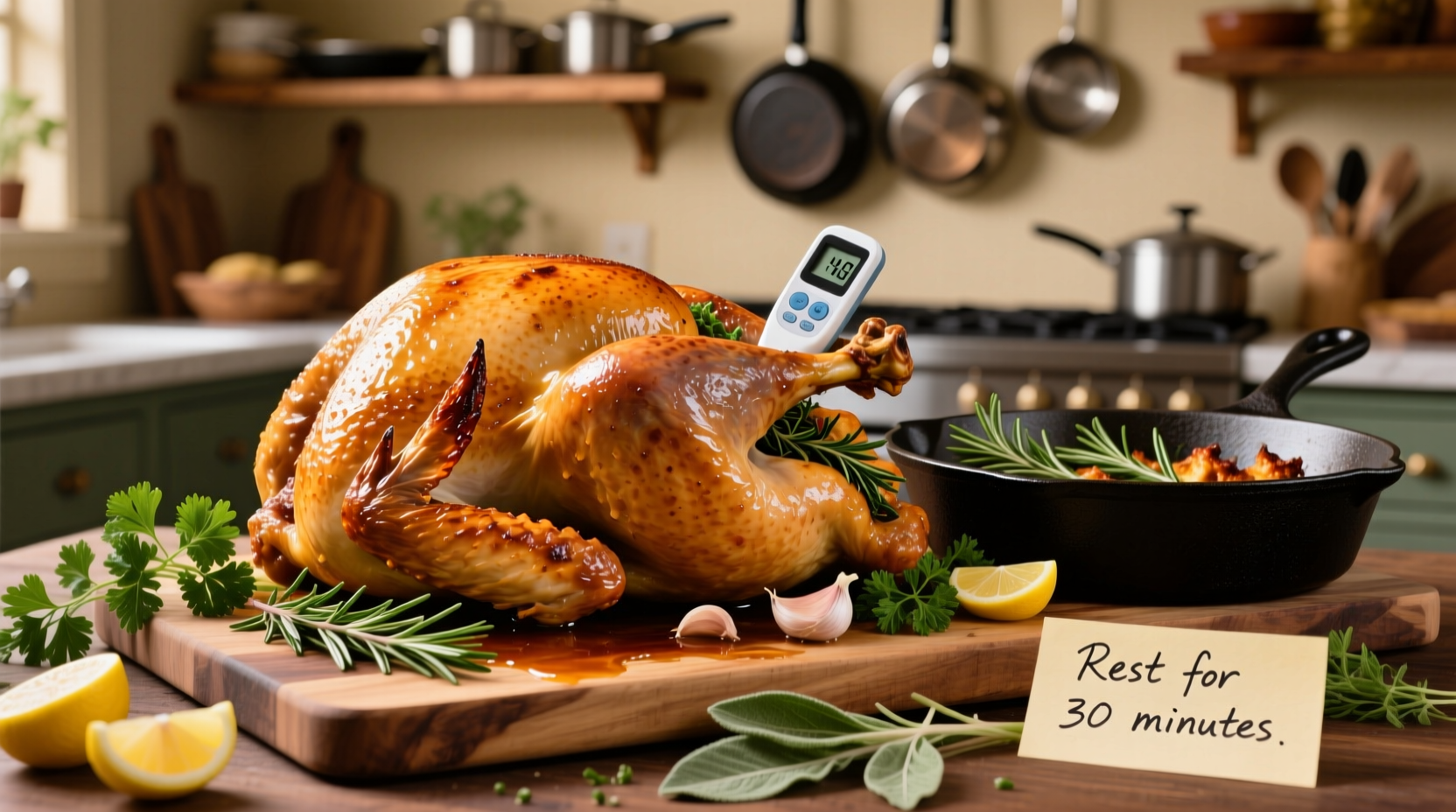Master the Perfect 14 lb Turkey: Your Complete Holiday Guide
Nothing says holiday celebration like a golden-brown roasted turkey, but cooking a 14-pound bird perfectly requires precise timing and technique. Get ready to impress your guests with juicy meat, crispy skin, and flavors that elevate your centerpiece from ordinary to extraordinary. This guide delivers exactly what you need—no guesswork, no kitchen disasters, just reliable methods backed by food science and professional kitchen experience.
Why This Guide Works for Your 14 lb Turkey
Most turkey instructions give generic advice that fails with larger birds. A 14 lb turkey sits at the sweet spot between small holiday birds and massive feasts—too big for quick cooking times, too small to follow deep-breast thermometry rules for giant turkeys. This guide solves that problem with size-specific timing, temperature checkpoints, and proven moisture-retention techniques that prevent dry meat.
Preparation Checklist: What You Need Before Starting
Success begins long before the oven heats up. Gather these essentials:
- 14 lb fresh or fully thawed turkey (never cook frozen)
- Roasting pan with rack (16x13 inches minimum)
- Meat thermometer (instant-read or probe)
- Cooking twine for trussing
- Butter or olive oil for skin basting
- Basic aromatics: onion, celery, garlic, fresh herbs
Thawing Timeline: The Critical First Step
Improper thawing causes uneven cooking and food safety risks. For a 14 lb turkey:
| Thawing Method | Time Required | Key Safety Notes |
|---|---|---|
| Refrigerator (40°F or below) | 3–4 days | Place on tray to catch drips; keep wrapped until fully thawed |
| Cold Water Bath | 7–9 hours | Submerge in leak-proof bag; change water every 30 minutes |
| Never: Room Temperature | N/A | Danger zone exposure risks salmonella growth |
This data comes directly from the USDA Food Safety and Inspection Service, which emphasizes that refrigerator thawing maintains safe temperatures throughout the process. Many home cooks underestimate thawing time—starting with a partially frozen turkey leads to burnt skin and raw interior.

Seasoning Strategy: Flavor That Penetrates
Surface-level seasoning won't flavor a 14 lb turkey properly. Professional kitchens use these techniques:
Dry Brine (48 hours before cooking): Rub 1–2 tablespoons kosher salt per 5 lbs under the skin and on the surface. Refrigerate uncovered. This draws out moisture temporarily, then pulls seasoned liquid back into the meat.
Butter Injection (Morning of cooking): Mix 4 oz softened butter with minced garlic and herbs. Use a marinade injector in the breast and thigh meat. This adds moisture directly where the turkey dries out first.
Final Seasoning (1 hour before roasting): Pat skin completely dry, then rub with oil and additional herbs. Dry skin = crispy skin.
Roasting Process: Timing and Temperature Guide
Conventional oven roasting delivers the most reliable results for home cooks. Follow this timeline:
- Preheat oven to 425°F with rack in lower third
- Place turkey breast-side up on rack; add 2 cups broth to pan bottom
- Initial blast: Roast at 425°F for 30 minutes to sear the skin
- Reduce heat to 325°F and continue roasting
- Check temperature after 2½ hours: insert thermometer into thickest breast part (avoiding bone)
- Continue roasting until breast reaches 160°F and thigh reaches 165°F
For a 14 lb turkey, total cooking time typically ranges from 3 to 3½ hours at 325°F after the initial sear. Never rely solely on time—always verify with a thermometer. The USDA Food Safety and Inspection Service confirms that 165°F is the safe minimum internal temperature for poultry.
Troubleshooting Common 14 lb Turkey Problems
Breast drying out before thighs cook: Tent breast area with foil when it reaches 150°F, leaving thighs exposed.
Skin browning too fast: Lower oven temperature by 25°F and rotate pan for even heat distribution.
Unexpected early finish: If turkey hits temperature early, remove from oven, tent loosely with foil, and let rest. It will continue cooking internally.
Resting and Carving: The Final Crucial Steps
Resist the urge to carve immediately! Resting allows juices to redistribute:
- Transfer turkey to cutting board; tent loosely with foil
- Rest for minimum 30 minutes (up to 45 for 14 lb bird)
- While resting, make gravy from pan drippings
- Carve starting with legs, then wings, then breast meat
Skipping this step causes juices to spill out onto the cutting board instead of staying in the meat. Professional chefs consider resting non-negotiable for large poultry.
Why These Methods Work for Holiday-Sized Turkeys
Our recommendations specifically address the physics of cooking a 14 lb turkey—large enough that heat penetration takes significant time, but small enough that standard roasting techniques apply without modification. Unlike 20+ lb birds that require specialized equipment or techniques, a 14 lb turkey follows predictable cooking curves when handled properly. This size represents the most common holiday turkey in American households, making these guidelines universally applicable for Thanksgiving and Christmas dinners.
Frequently Asked Questions
Can I cook a 14 lb turkey at 350°F instead of 325°F? Yes, but reduce total time by 15–20 minutes. Higher heat risks drier meat if not monitored closely.
Should I stuff my 14 lb turkey? The USDA recommends cooking stuffing separately for food safety. If stuffing the bird, add 30–45 minutes to cooking time and verify stuffing reaches 165°F.
How do I know when my turkey is done without a thermometer? While thermometers are essential for accuracy, properly cooked turkey shows clear juices when pierced and legs move freely in sockets.
Can I use a convection oven for a 14 lb turkey? Yes—reduce temperature by 25°F and check 20–30 minutes earlier. Convection speeds cooking but risks uneven browning.
What's the best way to reheat leftover turkey? Wrap slices in broth-moistened paper towels and reheat at 250°F until warmed through—never microwave whole portions.











 浙公网安备
33010002000092号
浙公网安备
33010002000092号 浙B2-20120091-4
浙B2-20120091-4